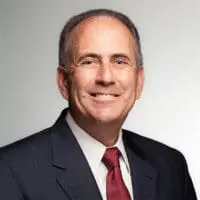Publication
Revitalization of the Multiple Use Mandate
On February 11, 2025, the U.S. House Committee on Natural Resources, Subcommittee on Federal Lands, held an Oversight Hearing on “Restoring Multiple Use to Revitalize America’s Public Lands and Rural Communities.” Approximately 28 percent (roughly 640 million acres) of the land in the United States1 is owned by the federal government. Most of those lands are concentrated in Alaska and 11 other western states where the federal government owns nearly 50 percent of the landmass.2 According to the hearing memorandum3 prepared for the members, for nearly half a century, the multiple use and sustained yield (multiple use mandate) has guided federal land management strategy to effectively balance use and conservation; but in recent years, the focus has shifted away from the multiple use mandate in favor of prioritizing “climate change resiliency.” This hearing examined the consequences of this shift and the benefits of the multiple use mandate.4
To better understand the implications that accompany a shift away from the multiple use mandate, the hearing memorandum reviews “policies and programs such as the ‘30×30 Initiative,’ the Bureau of Land Management’s (BLM) Conservation and Landscape Health Rule (Public Lands Rule), national monument creation and expansion, preservationist resource management plans (RMPs), the ‘Old Growth’ Initiative, and related efforts.”5 According to the hearing memorandum, a consequence of these policies and programs is the progressive erosion of the multiple use mandate which hinders economic development, restricts access to natural resources, and impedes proper conservation thereof.
The Federal Land Policy and Management Act of 1976 (FLPMA) requires that the “BLM-administered lands are to be managed in support of multiple uses, which…include livestock grazing, energy and mineral development, timber production, outdoor recreation, and wildlife habitat protection.”6 Multiple use is a management strategy that balances the various resources of the public lands “so that they are utilized in the combination that will best meet the present and future needs of the American people; making the most judicious use of the land for some or all of these resources…”7 However, the hearing memorandum explains that the Public Lands Rule is contrary to the FLPMA dictates, in that it authorizes the BLM to prioritize conservation over all other resources, in addition to allowing for the issuance of “restoration and mitigation” leases, thereby substantially altering land use and management decisions.
In his testimony to the Subcommittee, Eric Clarke, County Attorney for Washington County, Utah, explained that the multiple use mandate encourages the land and its resources to be used for a variety of purposes to benefit the local communities and environment. He shared real examples of how the erosion of the multiple use mandate and the expansion of bureaucratic red tape have negatively impacted local communities by resulting in sawmill closures, obstacles with obtaining grazing leases and accessing grazing areas, and population depletion due to economic instability.8 Wildland firefighter and Executive Director of the Colorado Department of Natural Resources, Dan Gibbs, also testified that the multiple use mandate management strategy of public lands is essential in minimizing the opportunity for and destruction of massive wildfires.9 He further elaborated that the multiple use mandate is critical to the preservation of the public lands as it requires “working together to find the balance between resource extraction and conservation.”10
The hearing memorandum also states that federal agencies’ implementation of the statutory multiple use mandate benefits the environment and the economy through responsible stewardship of the public lands.11 The U.S. House Committee on Natural Resources is reviving the multiple use mandate through consideration of the following bills, among others:12
The purpose of this Act is “to restore forest health, improve resiliency to catastrophic wildfires, and protect communities by expediting environmental analyses and deterring frivolous lawsuits.”13 This bipartisan cosponsored bill was voted out of the U.S. House on January 23, 2025, and is currently awaiting action in the U.S. Senate.14
This bill was introduced in the 118th Congress, but is expected to be introduced in the U.S. House for consideration by the 119th Congress. On February 11, 2025, the Senate companion bill (S. 530: Western Economic Security Today (WEST) Act of 2025) was introduced and referred to the Senate Committee on Energy and Natural Resources. The WEST Act requires that the BLM withdraw its Public Lands Rule.15
This bill was introduced in the 118th Congress, but is expected to be introduced in the U.S. House for consideration by the 119th Congress. It amends the Antiquities Act to require congressional approval of proposed national monument designations; and prohibits a President from redesignating a monument for 25 years.
The Committee’s stated interest in these bills is to revitalize the multiple use mandate upon passage, but they also align with the direction given via Executive Orders 14153, 14154, 14156, and 14192. We will be monitoring these bills and providing updates on the progress thereof.
Footnotes
-
Carol Hardy Vincent & Laura A. Hanson, “Federal Land Ownership: Overview and Data,” Congressional Research Service, February 21, 2020, https://www.crs.gov/reports/pdf/R42346/R42346.pdf, p.1.
-
Ibid.
-
Aniela Butler, Brandon Miller, and Jason Blore, “Oversight Hearing on ‘Restoring Multiple Use to Revitalize America’s Public Lands and Rural Communities,’” U.S. House Committee on Natural Resources Subcommittee on Federal Lands, February 10, 2025, hearing_memo_–_sub_on_fl_ov_hrg_on_restoring_multiple_use_02.11.25.pdf, (“Hearing Memorandum”)
-
Id, p. 3.
-
Ibid.
-
Ibid.
-
43 U.S.C. §1702(c)
-
Eric Clark, Written Testimony of Washington County, Utah County Attorney Eric Clark, U.S. House Committee on Natural Resources Subcommittee on Federal Lands “Oversight Hearing: Restoring Multiple Use to Revitalize America’s Public Lands and Rural Communities,” February 11, 2025, HHRG-119-II10-Wstate-ClarkeE-20250211.pdf, p.1.
-
Dan Gibbs, Witten Testimony of Dan Gibbs, Executive Director of the Colorado Department of Natural Resources, U.S. House Committee on Natural Resources Subcommittee on Federal Lands “Oversight Hearing: Restoring Multiple Use to Revitalize America’s Public Lands and Rural Communities,” February 11, 2025, HHRG-119-II10-Wstate-GibbsD-20250211.pdf, p.2.
-
Id., p.3.
-
Hearing Memorandum, p. 10.
-
Ibid.
-
Ibid.
-
-
H.R.3397 – 118th Congress (2023-2024): WEST Act of 2024 | Congress.gov | Library of Congress
About Snell & Wilmer
Founded in 1938, Snell & Wilmer is a full-service business law firm with more than 500 attorneys practicing in 17 locations throughout the United States and in Mexico, including Los Angeles, Orange County, Palo Alto and San Diego, California; Phoenix and Tucson, Arizona; Denver, Colorado; Washington, D.C.; Boise, Idaho; Las Vegas and Reno, Nevada; Albuquerque, New Mexico; Portland, Oregon; Dallas, Texas; Salt Lake City, Utah; Seattle, Washington; and Los Cabos, Mexico. The firm represents clients ranging from large, publicly traded corporations to small businesses, individuals and entrepreneurs. For more information, visit swlaw.com.



